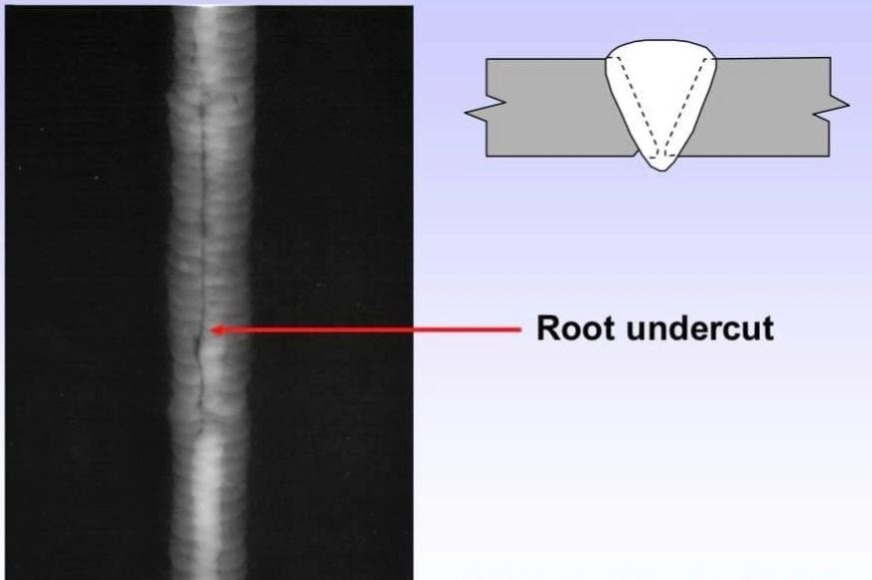Mastering the Art of Welding: How to Prevent Undercut Welding Issues for Flawless Construction Outcomes
By understanding the origin triggers of undercut welding and executing effective techniques to stop it, welders can elevate their craft to brand-new levels of quality. In the pursuit of flawless manufacture results, mastering the art of welding to stay clear of undercut problems is not just an ability however a necessity for those aiming for perfection in their job.
Understanding Undercut Welding
To stop undercut welding, welders should make sure proper welding criteria, such as adjusting the existing, voltage, travel rate, and maintaining the proper electrode angle. Furthermore, making use of the suitable welding method for the particular joint arrangement is vital. Utilizing weaving activities or backstepping strategies can aid make sure correct weld steel deposition and reduce the chance of undercut formation. Regular inspection of welds during and after the welding procedure is likewise crucial to capture any kind of undercut very early and make required modifications to avoid additional issues. Preventing weld undercut. By comprehending the reasons for undercut welding and implementing preventive procedures, welders can attain top quality, structurally sound welds.
Sources Of Undercut in Welding
Comprehending the elements that add to undercut in welding is important for welders to create top notch, structurally audio welds. When the weld metal does not properly load the groove created in between the base steel and the formerly deposited weld metal, damaging takes place. A number of aspects can result in undercut in welding. One usual cause is too much heat input. Welding at high temperatures for prolonged durations can cause the base metal melting greater than preferred, causing undercut. Poor welding existing or incorrect welding speed can additionally add to undercut. Not enough current might not give adequate heat to thaw the base and filler steels appropriately, while too much speed can avoid proper blend, triggering undercut. Additionally, improper electrode angles or inaccurate torch adjustment methods can create locations of reduced weld steel deposition, advertising undercut. Recognizing these reasons and applying appropriate welding methods can aid stop undercutting problems, making certain strong and durable welds.
Methods to stop Undercutting

To mitigate the risk of damaging in welding, welders can use calculated welding strategies focused on improving the high quality and integrity of the weld this contact form joints. One effective technique is to change the welding specifications, such as voltage, present, and take a trip rate, to ensure appropriate heat input and deposition. Preserving an appropriate electrode angle and making certain regular traveling rate can additionally help prevent undercut. Additionally, using the appropriate welding method for the certain joint arrangement, such as additional info weave or stringer grains, can add to reducing damaging. Preventing weld undercut.
Additionally, proper joint preparation, consisting of ensuring tidy base products complimentary of pollutants and utilizing the suitable welding consumables, is important in avoiding undercut defects. Using back-step welding strategies and managing the weld bead profile can additionally assist distribute warmth uniformly and lessen the risk of undercut. Normal assessment of the weld joint during and after welding, as well as applying quality control measures, can assist in addressing and detecting undercutting problems immediately. By carrying out these techniques diligently, welders can attain perfect construction results with minimal undercut defects.
Relevance of Proper Welding Parameters
Choosing and preserving ideal welding parameters is important for accomplishing effective welds with marginal defects. Welding parameters refer to variables such as voltage, present, take a trip rate, electrode angle, and securing gas circulation price that straight impact the welding process. These parameters should be very carefully readjusted based upon the kind of product being bonded, its thickness, and the welding method utilized.
Proper welding criteria guarantee the correct amount of warm is applied to visit this web-site melt the base steels and filler product uniformly. If the criteria are established as well high, it can bring about excessive warm input, causing spatter, distortion, or burn-through. On the other hand, if the specifications are also low, incomplete fusion, lack of infiltration, or damaging may happen.
Quality Control in Welding Operations

Conclusion
In verdict, mastering the art of welding calls for a comprehensive understanding of undercut welding, its causes, and methods to stop it. By making certain correct welding criteria and carrying out top quality assurance practices, flawless construction outcomes can be achieved. It is crucial for welders to regularly make every effort for quality in their welding procedures to stay clear of undercut concerns and produce top quality welds.
Undercut welding, an usual problem in welding processes, happens when the weld metal doesn't properly load the groove and leaves a groove or depression along the bonded joint.To stop undercut welding, welders ought to ensure appropriate welding parameters, such as changing the present, voltage, travel rate, and maintaining the correct electrode angle. Insufficient welding current or incorrect welding speed can also add to undercut.To reduce the danger of damaging in welding, welders can use critical welding techniques intended at boosting the top quality and integrity of the weld joints.In final thought, understanding the art of welding needs an extensive understanding of undercut welding, its reasons, and methods to stop it.